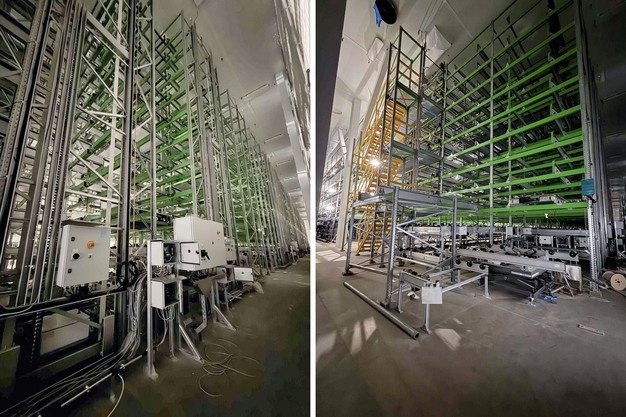Food Security Leadership Council Launches to Forge New Path For U.S. Leadership in Global Food Security – PR Newswire

Report on the Formation of the U.S. Food Security Leadership Council and its Commitment to the Sustainable Development Goals
Introduction: A Renewed Commitment to Global Food Security
On July 22, 2025, a bipartisan coalition of over 25 American leaders launched the Food Security Leadership Council. This nonpartisan policy organization aims to reimagine and strengthen the United States’ approach to global food security, directly contributing to the achievement of the United Nations Sustainable Development Goals (SDGs). Led by Dr. Cary Fowler, the 2024 World Food Prize Laureate and former U.S. Special Envoy for Global Food Security, the Council convenes experts from industry, science, agriculture, global development, and government. Its formation signals a strategic effort to align U.S. interests and values with the global imperative to end hunger and malnutrition.
Core Mission: Advancing SDG 2 (Zero Hunger)
The Council’s primary mission is fundamentally aligned with SDG 2: Zero Hunger, which seeks to end hunger, achieve food security, improve nutrition, and promote sustainable agriculture. Dr. Fowler emphasized the urgency of this goal, stating, “As global crises compound, it will become harder and harder for the world to feed itself—we need to chart a new path.”
To achieve this, the Council has established three strategic objectives:
- To formulate an actionable blueprint for strategic U.S. leadership in global food security.
- To analyze and illuminate the impact of U.S. public policies on global food security outcomes.
- To build and energize the next generation of policymakers committed to achieving SDG 2.
A Multi-Stakeholder Approach: Embodying SDG 17 (Partnerships for the Goals)
The structure and philosophy of the Council exemplify SDG 17: Partnerships for the Goals. By bringing together a diverse, bipartisan group of leaders, the Council is creating a powerful multi-stakeholder platform for action. This collaborative approach is essential for mobilizing the financial resources, technology, and expertise needed to address the complexities of global hunger. The Council’s stated intent to work “in partnership with other countries” further underscores its commitment to the global cooperation central to the 2030 Agenda.
Addressing Interconnected Development Challenges
The Council’s strategy acknowledges that food security is deeply interconnected with other Sustainable Development Goals. Its work is poised to generate co-benefits across multiple areas of the 2030 Agenda.
- SDG 1 (No Poverty): Dr. Elsa Murano, Director of the Norman Borlaug Institute for International Agriculture & Development, highlighted the link between food systems and poverty reduction. She noted that strong U.S. leadership can “create resilient food systems that help small-holder farmers elevate themselves out of poverty and hunger.”
- SDG 16 (Peace, Justice and Strong Institutions): General Anthony Zinni (Ret.), former Commander of U.S. Central Command, directly connected food security to global stability, a core tenet of SDG 16. His statement, “Where people are hungry, conflict festers,” positions the Council’s work as a critical component of conflict prevention and peace-building.
- SDG 9 (Industry, Innovation and Infrastructure): The call for innovation is a central theme. Dr. John Mather, a Nobel-winning astrophysicist, urged a “bold vision and long-term commitment” rooted in “ambitious innovation and collaboration.” This aligns with SDG 9’s focus on building resilient infrastructure and fostering innovation to drive sustainable development.
Council Leadership and Membership
The Council is led by Dr. Cary Fowler and comprises a distinguished group of leaders, reflecting the multi-sectoral partnership required to advance the SDGs. Members include:
- Alice Albright
- Amb. Ertharin Cousin
- Amd. Jeff Prescott
- Dan Barber
- David Hamod
- Dr. Brian Schmidt
- Dr. Chris Barrett
- Dr. Cristian Samper
- Dr. Cynthia Rosenzweig
- Dr. Elsa Murano
- Dr. Gebisa Ejeta
- Dr. John Mather
- Dr. Manjit Misra
- Dr. Marty Chalfie
- Dr. Molly Jahn
- Dr. Rich Roberts
- Dr. Sarah B. Kapnick
- Gen. Anthony Zinni
- Howard W. Buffett
- Jose W. Fernandez, Esq.
- Pat Bowe
- Peter McPherson, Esq.
- Rev. Dr. David Beckmann
- Sarah Charlies
- Sen. Jon Tester
1. Which SDGs are addressed or connected to the issues highlighted in the article?
-
SDG 2: Zero Hunger
This is the central theme of the article. The formation of the Food Security Leadership Council is explicitly to “reimagine the U.S. approach to solving global food security” and “tackle global food insecurity.” The goal is to chart a path “toward a future where every person has access to the food they need.”
-
SDG 1: No Poverty
The article directly links food security with poverty reduction. It mentions that strong U.S. leadership can “help small-holder farmers elevate themselves out of poverty and hunger,” establishing a clear connection between agricultural support and poverty alleviation.
-
SDG 16: Peace, Justice and Strong Institutions
A direct connection is made between hunger and conflict. General Anthony Zinni is quoted as saying, “Where people are hungry, conflict festers.” The article also states that addressing food insecurity contributes to “enhancing global stability,” which aligns with the goal of promoting peaceful societies.
-
SDG 17: Partnerships for the Goals
The entire article is about the creation of a partnership. The Food Security Leadership Council is described as a “bipartisan” and “nonpartisan” group that “brings together those who believe the United States, in partnership with other countries, can strengthen food security.” It is a multi-stakeholder partnership involving “leaders across industry, science, agriculture, global development, and government.”
2. What specific targets under those SDGs can be identified based on the article’s content?
-
SDG 2: Zero Hunger
-
Target 2.1: By 2030, end hunger and ensure access by all people… to safe, nutritious and sufficient food all year round.
The article’s core mission is to “solve hunger” and ensure “every person has access to the food they need,” which directly reflects this target.
-
Target 2.3: By 2030, double the agricultural productivity and incomes of small-scale food producers…
This is identified through the statement that the initiative aims to “help small-holder farmers elevate themselves out of poverty and hunger,” which implies increasing their productivity and income.
-
Target 2.4: By 2030, ensure sustainable food production systems and implement resilient agricultural practices…
The article explicitly mentions the goal to “help create resilient food systems” to address the demands of a changing world.
-
Target 2.a: Increase investment, including through enhanced international cooperation, in rural infrastructure, agricultural research and extension services, technology development…
The council’s focus on “U.S. leadership,” “partnership with other countries,” “ambitious innovation and collaboration,” and the involvement of scientific leaders and institutions like the Norman Borlaug Institute for International Agriculture & Development points directly to this target.
-
Target 2.1: By 2030, end hunger and ensure access by all people… to safe, nutritious and sufficient food all year round.
-
SDG 1: No Poverty
-
Target 1.1: By 2030, eradicate extreme poverty for all people everywhere…
The article connects hunger and poverty by stating a goal is to “help small-holder farmers elevate themselves out of poverty,” linking food security initiatives directly to poverty eradication for a specific vulnerable group.
-
Target 1.1: By 2030, eradicate extreme poverty for all people everywhere…
-
SDG 16: Peace, Justice and Strong Institutions
-
Target 16.1: Significantly reduce all forms of violence and related death rates everywhere.
This target is relevant due to the assertion that “Where people are hungry, conflict festers.” By addressing hunger, the initiative aims to mitigate a root cause of conflict and contribute to “enhancing global stability.”
-
Target 16.1: Significantly reduce all forms of violence and related death rates everywhere.
-
SDG 17: Partnerships for the Goals
-
Target 17.16: Enhance the global partnership for sustainable development, complemented by multi-stakeholder partnerships…
The Food Security Leadership Council is a quintessential example of this target, described as a “nonpartisan policy organization” bringing together leaders from “industry, science, agriculture, global development, and government.”
-
Target 17.17: Encourage and promote effective public, public-private and civil society partnerships…
The article highlights the council’s formation as a partnership that leverages U.S. leadership “in partnership with other countries” and involves a diverse group of stakeholders to achieve its goals.
-
Target 17.16: Enhance the global partnership for sustainable development, complemented by multi-stakeholder partnerships…
3. Are there any indicators mentioned or implied in the article that can be used to measure progress towards the identified targets?
The article is a high-level announcement and does not provide specific quantitative indicators. However, it implies several qualitative or process-based indicators for measuring progress:
-
For SDG 2 (Zero Hunger):
- Implied Indicator: Creation and implementation of an “actionable blueprint for strategic U.S. leadership in global food security.” The development of this blueprint is a key deliverable.
- Implied Indicator: The establishment of “resilient food systems.” Progress could be measured by the number and effectiveness of such systems created or supported.
- Implied Indicator: The economic status of small-holder farmers. Progress would be measured by the extent to which they are “elevated out of poverty and hunger.”
-
For SDG 16 (Peace, Justice and Strong Institutions):
- Implied Indicator: The level of “global stability.” Progress could be assessed by analyzing the correlation between improved food security and reduced conflict in targeted regions.
-
For SDG 17 (Partnerships for the Goals):
- Implied Indicator: The successful functioning of the Food Security Leadership Council itself. Its ability to formulate policy, elevate awareness, and unite leaders is a measure of a successful partnership.
- Implied Indicator: The formulation and adoption of “U.S. public policies on global food security” that are influenced by the council’s work.
4. SDGs, Targets, and Indicators Table
| SDGs | Targets | Indicators (Implied from Article) |
|---|---|---|
| SDG 2: Zero Hunger | 2.1: End hunger and ensure access to food for all. | Number of people with access to food in areas of focus. |
| 2.3: Double agricultural productivity and incomes of small-scale food producers. | Change in the economic status and income of small-holder farmers. | |
| 2.4: Ensure sustainable food production systems and resilient agricultural practices. | Establishment and effectiveness of “resilient food systems.” | |
| 2.a: Increase investment in agricultural research and technology development. | Level of investment and innovation driven by U.S. leadership and partnerships. | |
| SDG 1: No Poverty | 1.1: Eradicate extreme poverty. | Number of small-holder farmers elevated out of poverty. |
| SDG 16: Peace, Justice and Strong Institutions | 16.1: Significantly reduce all forms of violence. | Reduction in conflict in food-insecure regions; enhancement of “global stability.” |
| SDG 17: Partnerships for the Goals | 17.16: Enhance the global partnership for sustainable development. | The formation and effective operation of the multi-stakeholder Food Security Leadership Council. |
| 17.17: Encourage effective public, public-private and civil society partnerships. | Development of an “actionable blueprint” and influence on “U.S. public policies.” |
Source: prnewswire.com

What is Your Reaction?
 Like
0
Like
0
 Dislike
0
Dislike
0
 Love
0
Love
0
 Funny
0
Funny
0
 Angry
0
Angry
0
 Sad
0
Sad
0
 Wow
0
Wow
0









































































